The Real Gabbar of Chambal
In 1959, Madhya Pradesh Chief Minister Kailasgh Nath Katju asked his police force: Gabbar, dead or alive.
@Asim Deb
“Mujhe Gabbar chahiye, zinda, sirf zinda” This gristly dialogue hissed from the clenched teeth of Sanjeev Kumar (Thakur Saheb in Sholay). However, it was a vocal copy of the Madhya Pradesh Chief Minister Kailasgh Nath Katju. In reality, it was ordered in 1959 by the then Madhya Pradesh Chief Minister Kailasgh Nath Katju, who demanded from his police force: Gabbar, dead or alive. He had no choice. MP police had declared a reward of Rs 20,000 on Gabbar, the UP cops had declared another Rs 20,000 and the Rajasthan police Rs 10,000 — so collectively a total of “pooray pachas hazaar” as in Sholay.
It is being said that Salim Khan, the script writer for Hindi movie Sholay had got the idea of Gabbar Singh from his father who was working with the Madhya Pradesh Police. According to BBC and many other news agencies, the real Gabbar was born in 1926 in Dang village in Gohad Tehsil of Bhind district in Madhya Pradesh.
In 1959, Rajendra Prasad Modi, only 26-year-old Madhya Pradesh Deputy Superintendent of police was not a Thakur Saheb, but Gabbar Singh was real. The real police operation was not as dramatic as the scene of Ramesh Sippy’s blockbuster Sholay’s Thakur Saheb crushing Gabbar Singh’s face with his nail-studded ‘jooti’ (shoe). Rajendra Prasad Modi, now retired, still rues the ‘impotent’ image that the film Sholay has almost permanently pasted on the face of the police forces, as against the brave brigands as to courageous cops. The brave police officer like Rajendra Prasad Modi feels sad that a person taking help of two petty thieves to catch Gabbar and bring him to his feet. And the role played by Asrani, as a jailor, from whose custody Jai and Veeru (Amitabh Bachchan and Dharmendra) escape, the entire police force is shown as a bunch of stupid.
Gabbar’s stories of infamy and wanton cruelty are chronicled in a book ‘The British, The Bandits and The Bordermen’, which is based on the diaries of K F Rustamji, the Madhya Pradesh Inspector General of Police who planned and launched the operation against Gabbar. The book was edited by another IPS officer P V Rajgopal.
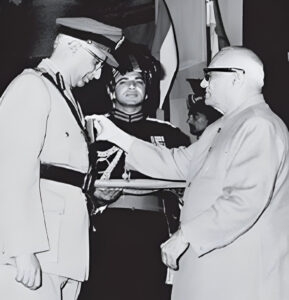
Modi was decorated, and was awarded the President’s Police Medal for gallantry, the highest award for a policeman in India.
Speaking to Deccan Herald, Rajgopal, who worked for the Research and Analysis Wing in the late-eighties said: “The real Gabbar, was ruthless, cruel and had a penchant for chopping off the noses of those who informed on him to the police.” According to Rajgopal, sometime in 1957, Bhind’s Gabbar, codenamed G-4, lined up 22 children and shot them “because somebody from that village, had reported about him to the police”. Rustamji’s book says that Gabbar Singh was told by a tantric that he would be immortal if he chopped off the noses of 116 children and offered them to the deity he worshipped.
Sippy’s Gabbar is also referred in Tarun Coomar Bhaduri’s book ‘Abhisapta Chambal’ (The Accursed Chambal).
In 1955, Gabbar Singh left the village and joined Kalyan Singh Gujjar’s gang and subsequently formed his own. According to Rustamji’s, Gabbar could create enough fear in the areas of Dholpur Bhind, Gwalior and Etawah that no one dared to leak any information regarding him. Interestingly this ‘real’ Gabbar was more of dreadful than the ‘reel’ one. The real Gabbar Singh had vowed to cut noses of 116 people as one ‘tantrik’ had advised him of doing so.
In this particular era, the Madhya Pradesh’s Chambal Valley was so tensed that even the then Prime Minister Jawaharlal Nehru was finding it hard to control the situation.The Opposition party in the Madhya Pradesh state Assembly had just paraded all the 10 victims of Gabbar, whose noses were cut off and sent the men back as “mementoes”, same what Gabbar did in Sholay.
Chief Minister Katjus political career was at stake, and in 1959, the task of eliminating Gabbar was was given to MP Police officer Rajendra Prasad Modi, a wiry, only 26-year-old Madhya Pradesh Deputy Superintendent of police who had already proved his mettle in wiping out some dreaded gangs of dacoits, including the legendary Putli Bai. Modi had been after Gabbar for some time, and had frequently raided Dang, the Bhind district village he hailed from. He had reports that Gabbar even forced his own fellow villagers to part with their money as well as women as comfort girls during his periodic sojourns. Modi had one day received intelligence that Gabbar was visiting the village and rushed there, but the brigand had vamoosed.
However, he found some commotion in Dang that day, because a home was on fire and a small boy, Shikhar, was trapped inside. The gutsy officer plunged in, and plunged out with the boy, safe, and handed him over to his family. He won total admiration that day, and the reward came just a few days later. Late one night, on November 13, 1959, even as he was dozing off in his bed, a man, some neighbour of Shikhar from Dang village, crept up to startle Modi in his bungalow. “We all see your efforts to get Gabbar, and we want the same. Please wipe out that scourge. You saved Shikhar, that day and now you have to save the rest of us. I have come to tell you that we know Gabbar is coming to our village tomorrow to again demand ransom.”
That was enough. On 13th November 1959, Modi drummed up a force close to 500 men and with the man guiding them, quietly reached the spot, at Ghum-Ka-Pura village, in a saucer-like depression between the national highway and the narrow gauge railway line, in Bhind district. Gabbar was there already, resting. Thus, when Modi ordered about two dozen of his men to open fire, the gang had little time to regroup and respond. In no time, most of them lay dead, and Gabbar was about to run. “That is when I lobbed the grenade, and it hit his chin, blowing out his jaws, as you see in the photograph” Modi told TSI. “But I still feel frustrated that his kin now accuse me of killing him for no reason. They say he had not come for ransom, but this is not true.” Since accusations always fly against cops who are honest and are true fighters and this was not the first time that Modi had slain a dreaded criminal. However, the entire system of becoming a baaghi (outlaw) has a different history, and these men were originally not simple criminals.
Rustamji, who was earlier working as special security officer to Nehru, wanted to present a unique gift to his PM.As Gabbar was killed a day ahead of Nehru’s birthday, Rustamji decided to present the news of Gabbar’s death as a gift to the ex-prime minister.
Sources: Deccan Herald, Zee News, Sunday, Aajtak
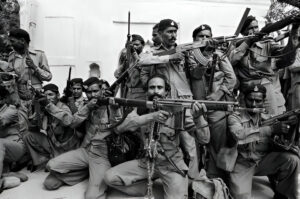
Though the dacoits of our times are little more than murderers and rapists, mythology has it that the Chambal River is the symbol of Draupadi’s open tresses, which she had vowed never to plait till she washed it in the blood of Dushshasan, who had disrobed her in open court. Thus, revenge for restoration of honour lies at the core of Chambal’s psyche, the psyche of the people of one of the toughest terrains anywhere: the bihad, or the arid, ravines, where life is always a massive struggle. And traditionally, whenever anyone from these bihad had felt wronged, he had become a baaghi and not rested till revenge had doused the fire in his heart. Such was the great procession of baaghis Pana, Sultan Singh, Man Singh, Amritlal, Lakhan, Gabbra (Gabbar) and Putli Bai, and among them, Daku Man Singh even now stands the tallest in stature. He had laid down a code of conduct, which denounced killing or sexual assault of women, robbing for robbing’s sake, and such other dictats. It was not a charmed life, but there was a level of romance. The dacoits even had their own wonderful folk music typically called Ala-Udhal, and the other legend, Putli Bai was a fabled singer of those soulful ballads on two fearless warriors, who never rested till their enemies were alive. And though later day bandits, like Phulan Devi, were complete perverts, the legend of Putli Bai lives on.
In fact, Putli Bai was the first among Modi’s many trophies. Once a dacoit’s moll, this bewitching beauty had become a terror in her own right in the Chambal of 1950s. It was January 23, 1958. Modi got information one day that Pulti and her gang had taken shelter in Sangli-Harisa village of Bhind district. He raced there and surrounded the dacoits. “Soon after, we came upon the gang”, Modi recalls. “But I did not order to open fire till we were a mere six feet away from where the gang was. Then, the firing started. In minutes, 11 dacoits lay dead. As we counted the bodies, the third happened to be Putli’s”, Modi told TSI.
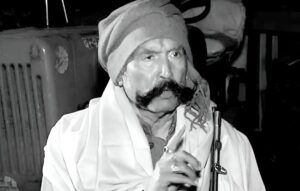
But then, in life, often the highest praise comes from the worst foe. And this one came from a former nightmare of Chambal, Mohar Singh, who had surrendered in the 1970s under a special initiative by social reformer Jai Prakash Narayan (JP). TSI met him at a public meeting at Mehgaon, 70 kilometres from Bhind town. Resplendent in his flowing dhoti-kurta, his thick black beard, a gun nestled against his legs, and a red vermillion teeka on his forehead, Singh, now in politics had much to praise in Modi: On the very first occasion that I saw him, I instinctively knew that here comes an honest and extremely courageous officer, and at the same time a perfect gentleman. I have a great desire to meet him once again some day.
Today, after the JP initiative led to the surrender of about a thousand dacoits, and after nasty riders of the Chanbal tradition like Phulan have been slain, the guns are more or less silent in Chambal’s bihad. But the legend of Draupadi, and the concomitant threat of another man or woman jumping into the ravines, gun in hand, is still alive. But the legends of the likes of Rajendra Prasad Modi live a quiet life, unsung anymore today!
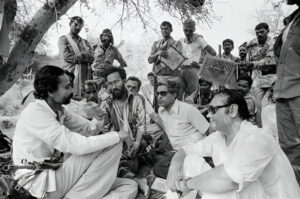
Dacoit Malkhan Singh, negotiating with the government officials before surrender.
http://www.deccanherald.com/content/35776/gabbar-singh-ramesh-sippy-missed.html
http://zeenews.india.com/news/india/gabbar-was-gifted-to-jawaharlal-nehru-on-birthday_1646865.html
http://www.thesundayindian.com/en/story/the-cop-who-killed-gabbar-singh/24/5855/
http://aajtak.intoday.in/crime/story/the-real-dacoit-gabbar-singh-took-off-the-ear-nose-of-cops-1-856416.html
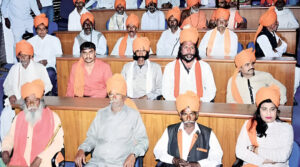
March 21, 2016
On the eve of International Day of Forests on Sunday, erstwhile bandits who ruled Chambal gathered in Jaipur to reminisce, and to tell the government that they wish to protect their land, as, they all said, people back home still respect their word.
*******

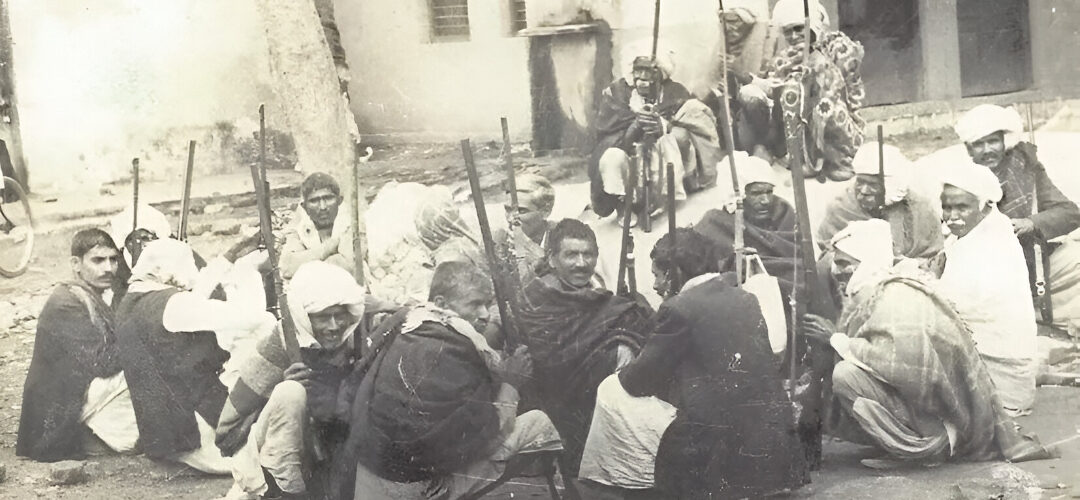

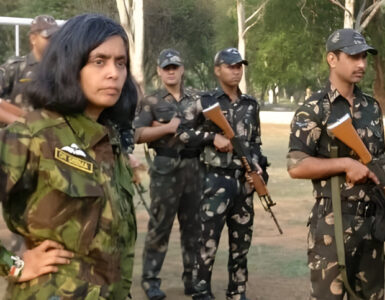










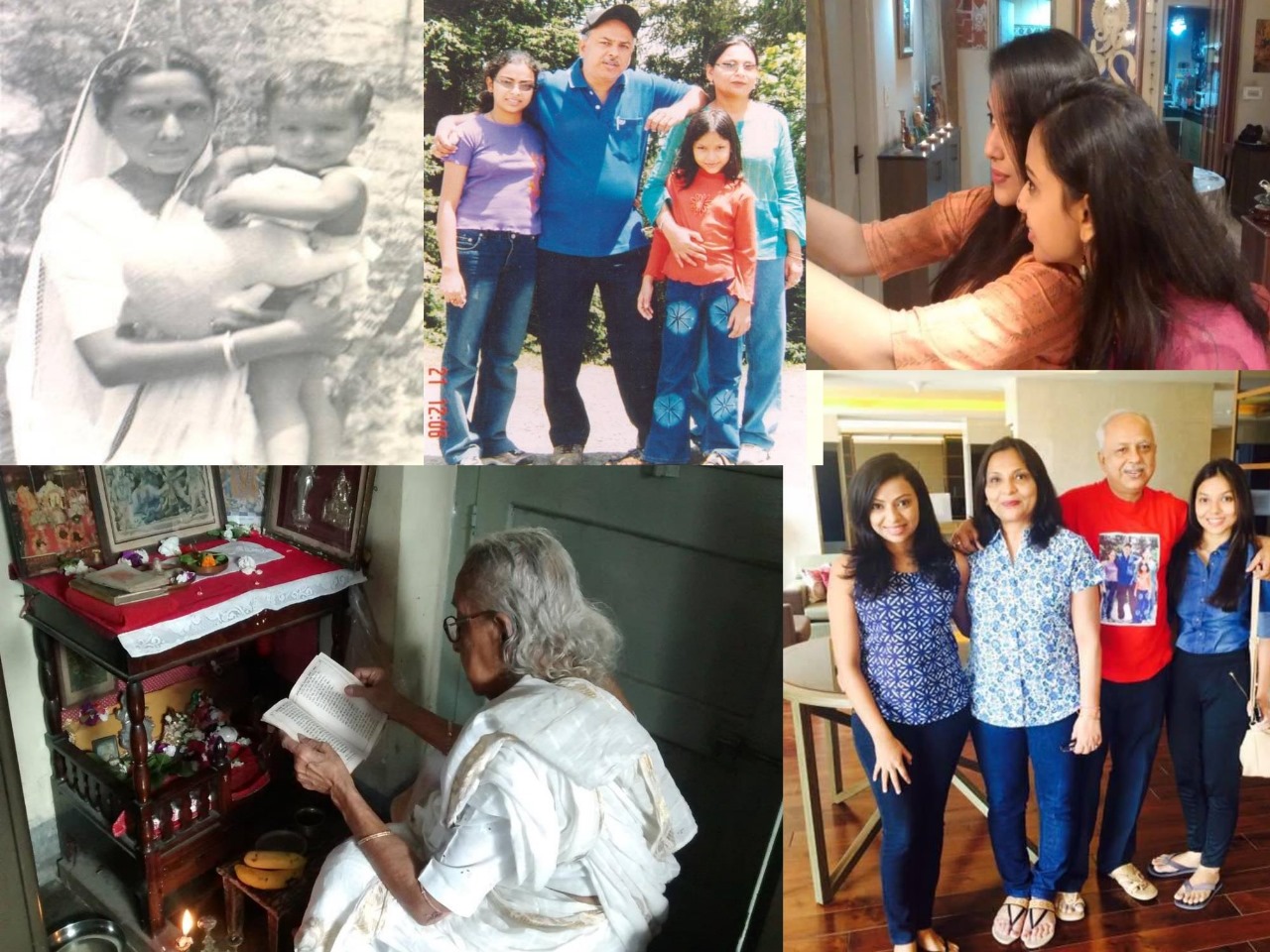
তরুণ কুমার ভাদুড়ীর লেখা ও ছয়ের দশকের দেশ পত্রিকার সাড়া জাগানো ধারাবাহিক, চম্বলের ডাকাত দলের নিয়ে লেখা (যার ওপর এক বাংলা সিনেমা “অভিশপ্ত চম্বল” তৈরি হয়েছিল এবং বক্স অফিসে সাড়াও তুলেছিল) উপন্যাসের পর চম্বলের বাগীদের নিয়ে কোনো তথ্যমূলক লেখা চোখে পড়ে নি। অসীম দেবের এই লেখাটি তাই মন ছুঁয়ে গেল। লেখার বাঁধুনীর গুণে দাউ মান সিংহ, লাখন সিং , অমৃতলাল, রূপা এবং অবশ্যই পূতলীবাই দের পূরানো স্মৃতি মনে আর একবার দাগ কেটে গেল। ডি এস পি মোদির মতো কিছু অদম্য সাহসী পুলিশ কর্তাদের জন্য ও তৎকালীন শাসকের দৃঢ়তার জন্য চম্বল আজ আর শিরোনামে নেই কিন্তু অল্প বয়সের মনে দাগ কাটা সেই ডাকাত কাহিনী গুলি অসীম দেবের এই লেখাটির কল্যাণে আবার স্মৃতি রোমন্থনের সুযোগ করে দিল।
It is truly sad the way our real life hero, the Madhya Pradesh police DSP Mr. Modi is projected as shown in Sholey. Salim Javed might write mega stories making studio actors as superman, but should be careful to show minimum respect for non screen but real life heroes.
Thanks author for such article.
লেখাটা পড়লাম।
শোলের গব্বর যে কপি মাল জানতাম না। তবে DSP মোদী সাহেবের ইতিহাস জানার পর শোলের ঠাকুর সাহেবের শত্রুনিধন পালা হাস্যকর মনে হয়। তবে এটাই বলিউড।
A beautifully penned article. Enjoyed reading it.
Sippy could have definitely make a Sholay even if real Gabbar Singh was not there, but the fact is that it mede his job easier, with plots already in place.
Anyway, Sholay stands on its own merit, but before that I salute the police officer also who in real life dared to grab the dreaded Gabbar.
Thanks author for digging out the history and sharing the real brave officer and also silver screen “safe player” Thakur Sahab.
Qudos to Mr. Asim Deb for making us revisit the fond childhood memories of Chambal legend.
The tradition of “Khoon ka badla khoon’ in Bhind Morena Gwalior region of Madhya Pradesh and becoming “Bagi” or rebel to persue mission of revenge is not visible nowadays.
Because Beehad , the dry bushy arid landscape on both sides of Chambal river is no more. The beehive structure of this terrain was the shelter and hinterland of the decoits or Bagis have been bulldozed and transformed into plain green agriculture fields.
Thus, the potentials and motivation for becoming decoits do not exist now. The present generation of Bundelkhand has become farmers.
Yet, the legend persists and also the folklore.
Rajendra Prasad Modi, the then Madhya Pradesh Deputy Superintendent of police might felt pity for the physically unfit fatman Thakur Sahab who was instructed by Sippy Saheb to kill silver screen Gabbar.
এই গল্পটা জানা ছিলো না। লেখক আমাদের এই ব্যাপারে অনেক কিছু অবগত করেছে। এইরকম ভয়ঙ্কর ডাকাত কোনো রাজ্যে থাকতে পারে জানা ছিলো না। যাইহোক লেখাটা বেশ ভালোই হয়েছে। কিন্তু আমার এই সত্যি কারের ঘটনা থেকে সিনেমাটা বেশি ভালো লেগেছিলো। লেখক কে এইসব নতুন নতুন তথ্য দেবার জন্য ধন্যবাদ। লেখা চলুক। 👏🏽❤
The article reminds me of the popular movie of our time. It was for the sake of popularity was fabricated. Now the article tells us the real story of Gabbar. About the book written by Tarun Bhadury, I heard the author personally visited Chambal several times and met some of the dacoits. The Bengali cinema was based on the book depicting mainly Putlibai and was not as popular as Sholay.
We heard about Jaiprakash Narayan’s movement and many dacoits surrendered. It was a good movement. However, there must be some social reasons for which such people became dacoits. I only hope, the social system has changed and there are no such dacoits.
Ashim has compiled many information about the dacoits and the actual actions of the police force . Many thanks for the article.
Additional information, I heard about Draupadi,s curse on the area for the first time. Thanks Ashim.
বেশ ভালো লাগলো পড়ে। তরুণ ভাদুড়ির উল্লেখিত বই টি পড়েছি অনেকদিন আগে। ভয়ঙ্কর ডাকাতদের ভীতিপ্রদ কাহিনী বইতে ও সিনেমায় পড়তে বা দেখতে যতটা রোমাঞ্চকর লাগে, সামনাসামনি হলে কি অবস্থা হবে ভাবতে পারো?
পুলিশ অফিসারদের সাহসিকতার তারিফ করি।
I wish at least for once our silver screen heroes starting from Amitabh, Dharam ji, fat belly Sanjeev Kumar to present day’s Salman, Ranbir, …. all should be sent on a real life mission, promising big rewards, and then see what happens next.
Real and Reel are apparently miles apart.
‘Chambal’ the name itself in our boy hood was dreaded on it’s own right with dense jungle and honeycomb type of terrain housing the real Decoits of Chambal.
Kudos to Asim Dev for his exhaustive research in reintroducing those infamous Decoits of Chambal through his valued presentation along with the real time hero, the then the DSP Rajendra Prasad Modi.
The script of Chambal is rewritten – thank you Asim.
An absorbing story which tells about decoits of chambal valley. Could know about a hero like DSP Modi. Many films were made in hindi & bengali , but did not find a character of such courageous police officer. Bengali journalist Tarun kumar Bhaduri written a book ” Abhisapta Chambal” which became famous in 1960s decade. What about today’s story in Chambal . Is there decoits still produced ? Or it transformed to other form where politicians give them protection to achieve their political goal. However the story you written give insight of real chmbal decoits in those days.
অনেক অজানা তথ্য সমৃদ্ধ পোস্ট।
খুব ভালো লাগল।
The Gabbar we know was from the film Sholay but this real life Gabbar? No, I must admit I had no idea and would like to thank the author Asim for bringing this out from the oblivion.
The dakus of Chambal ravine, the most inhospitable terrain of central India were there from the British period but came into prominence only after independence aided and abetted by the lax administration, extreme inequality and gross injustice that was prevailing post self rule in these area. The dakus were of diverse types, a Robin Hood type Man Singh to this merciless killer Gabbar. The article makes compelling reading, more so for the unique writing style of the author and the unconventional subject that is nostalgic and rekindles memories of the long forgotten past.
Story of those dreaded decoits of beehad of Chambal was written by Tarun Kumar Bhaduri in great detail in his book Abhisapta Chambal.
Surprised to note that,nothing is written about such a ruthless decoit, except mentioning his name. And more surprising is, not writing anything about DSP Rajendra Prasad Modi.
Encounter with Putlibai was described differently there and again Rajendra Prasad Modi was not mentioned.
In our Hindi movie of Mumbai, it was a general trend to depict Police in a ridiculous way. Mr.Modi had ample reason to rue.
Thanks for giving us such an absorbing story not known to me hitherto.